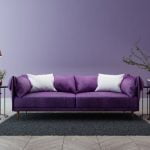Are you looking for tips on how to decorate the inside of your home? From choosing a color scheme to incorporating personal touches, this article will guide you through the process of transforming your living space into a place you can call your own.
The interior design of a home plays a crucial role in creating an environment that is not only visually appealing but also functional and reflective of the homeowner’s personality and style. In this section, we will discuss the importance of interior decoration and how it can impact the overall feel and ambiance of your home.
When it comes to decorating the inside of your home, there are various factors to consider. From selecting a color scheme that sets the tone of your space to finding the perfect furniture pieces and incorporating elements such as wall decor, lighting, textiles, and greenery, each aspect contributes to creating a cohesive and inviting atmosphere. By understanding the significance of interior decoration, you can make informed decisions to bring out the best in your living space.
Choosing a Color Scheme
When it comes to decorating the inside of your home, choosing a color scheme is one of the most important decisions you can make. The colors you select will set the tone for the entire space, affecting the mood and ambiance of each room. Here are some tips for choosing a color scheme that will bring your home to life.
Consider Your Personal Style
Before selecting a color scheme, consider your personal style and the overall vibe you want to create in your home. If you prefer a more relaxed and calming atmosphere, consider soothing neutrals like soft greys, warm beiges, or pale blues. For those who crave energy and excitement, vibrant hues like reds, yellows, or oranges can add a pop of color to any room.
Use Color Psychology
Color psychology is the study of how colors affect human behavior and emotions. When choosing a color scheme for your home, it’s helpful to consider the psychological effects of different colors. For example, blue is often associated with tranquility and calmness, making it an excellent choice for bedrooms or living rooms. On the other hand, yellow is known for its energetic and cheerful qualities, making it ideal for kitchens or dining areas.
Bring in Accent Colors
Once you’ve selected your main color scheme, don’t be afraid to bring in accent colors to add visual interest and variety to your space. Accent colors can be introduced through throw pillows, area rugs, artwork, or decorative accessories. These pops of color can help tie the whole room together and create a cohesive look throughout your home.
By carefully considering your personal style, using color psychology to guide your choices, and adding in accent colors for variety, you can create a color scheme that truly sets the tone for each room in your home. Whether you’re aiming for serenity or seeking vibrancy, the right colors can transform any space into a place that reflects your unique personality and taste.
Furniture Selection
When it comes to decorating the inside of your home, one of the most important aspects to consider is furniture selection. The right pieces can truly make a space feel complete and functional. Here are some tips for finding the perfect furniture for your space:
- Measure your space: Before heading out to shop for furniture, be sure to measure the dimensions of the room. This will help you determine what size and style of furniture will best fit in the space.
- Determine your needs: Think about how you use the space and what type of furniture will best suit those needs. For example, if you love to entertain, a sectional sofa or large dining table may be essential.
- Consider style and comfort: It’s important to find a balance between style and comfort when selecting furniture. Look for pieces that not only complement the aesthetic of your home but also provide a comfortable place to sit or relax.
In addition to these tips, shopping at a variety of stores and considering both new and secondhand options can help you find unique and affordable pieces that perfectly fit your space.
Remember, finding the perfect furniture is an important step in creating a home that is both beautiful and functional.
With careful consideration and planning, you can find pieces that bring both style and comfort into your living spaces.
Wall Decor
When it comes to decorating the inside of your home, wall decor plays a crucial role in creating visual interest and adding personality to your space. Art and mirrors are two popular choices for wall decor that can instantly elevate the look of any room.
When selecting artwork, it’s important to choose pieces that resonate with you personally and complement the overall style of your home. Whether you prefer bold abstract paintings, serene landscapes, or modern photography, art can be a powerful way to express your individual taste and enhance the aesthetic appeal of your interior.
In addition to art, mirrors are another versatile option for wall decor that can make a big impact on the look and feel of a room. Mirrors not only add visual interest, but they also have the ability to create the illusion of more space and reflect natural light throughout your home.
When strategically placed, mirrors can help brighten up dark areas and make rooms appear larger. Consider incorporating decorative mirrors in varying shapes, sizes, and frames to add depth and dimension to your walls while simultaneously enhancing the overall ambiance of your living spaces.
Furthermore, combining art and mirrors in a thoughtfully curated gallery wall is a popular trend that allows you to showcase a mix of pieces that reflect your personal style. Whether you opt for an eclectic display or a more uniform arrangement, creating a gallery wall with art and mirrors is an opportunity to infuse character into your home while transforming plain walls into captivating focal points.
| Wall Decor Ideas | Benefits |
|---|---|
| Artwork | Express individual taste, enhance aesthetic appeal |
| Mirrors | Create illusion of more space, reflect natural light |
Lighting
Types of Lighting
When it comes to lighting, there are three main types to consider: ambient, task, and accent lighting. Ambient lighting provides overall illumination for a room and is usually provided by ceiling lights or wall sconces. Task lighting is more focused and is used to illuminate specific areas where activities such as reading or cooking take place. Finally, accent lighting is used to highlight objects such as artwork or architectural features.
Choosing the Right Fixtures
The type of fixtures you choose can greatly impact the overall atmosphere of your home. Chandeliers can add a touch of elegance to a dining room, while pendant lights can create a modern and stylish look in a kitchen. Table lamps and floor lamps not only provide task lighting but also serve as decorative elements that can complement your interior design.
Natural Light
Incorporating natural light into your home is also crucial for creating an inviting and refreshing atmosphere. Consider using sheer curtains or blinds that allow natural light to filter through while still providing privacy when needed. Additionally, strategically placing mirrors around your space can help reflect natural light, making the room feel brighter and more spacious.
By paying attention to the different types of lighting, selecting the right fixtures, and maximizing natural light, you can enhance both the ambiance and functionality of your home’s interior design. Whether you prefer a cozy and intimate feel or a bright and airy space, proper lighting plays a key role in setting the mood and creating an inviting environment for your daily activities.
Textiles and Fabrics
When it comes to interior decoration, textiles and fabrics play a crucial role in adding comfort and personality to your home. The selection of the right fabrics can help create a cozy and inviting atmosphere while also reflecting your personal style. From curtains and upholstery to throw pillows and rugs, there are many ways to incorporate textiles into your home décor.
One important consideration when choosing textiles for your home is the durability and practicality of the fabric. For high-traffic areas such as living rooms and dining rooms, opt for durable, easy-to-clean fabrics that can withstand frequent use. On the other hand, you can be more creative with delicate or luxurious textiles in spaces that see less activity, such as bedrooms or formal sitting areas.
In addition to functionality, the choice of fabrics also impacts the visual appeal of your space. Consider mixing textures and patterns to add depth and interest to a room. For example, pair a plush velvet sofa with a patterned throw blanket or mix and match different throw pillow designs to add visual variety. By strategically using textiles and fabrics, you can infuse your home with warmth and personality while also tying together the overall aesthetic of the space.
| Textiles/Fabrics Selection | Consideration |
|---|---|
| Durability | Opt for durable, easy-to-clean fabrics for high-traffic areas |
| Texture Mixing | Pair different textured fabrics to add depth |
| Patterns | Mix and match patterns for visual variety |
Incorporating Greenery
Bringing nature indoors can have a significant impact on the overall ambiance and aesthetic of your home. Incorporating greenery not only adds a touch of natural beauty but also promotes a sense of calm and tranquility within your living space. Here are some tips for incorporating greenery into your home:
- Choose the Right Plants: When selecting plants for your home, consider the lighting conditions and available space in each room. Low-light plants like snake plants and pothos are ideal for rooms with minimal natural light, while succulents and ferns thrive in brighter spaces.
- Showcase Plants in Stylish Containers: Enhance the visual appeal of your greenery by displaying them in decorative pots or planters that complement your interior decor. Consider mixing different sizes and shapes to create an interesting display.
- Create Vertical Gardens: If you have limited floor space, consider creating a vertical garden using wall-mounted planters or hanging baskets. This not only adds a unique architectural element to your home but also maximizes the use of space.
In addition to visual appeal, indoor plants also offer numerous health benefits such as improving air quality, reducing stress, and boosting overall well-being. By strategically placing greenery throughout your home, you can create a harmonious balance between nature and interior design, making your living space feel vibrant and inviting.
Whether you opt for large statement plants or small clusters of succulents, incorporating greenery into your home adds an organic element that brings life and vitality to any room. With thoughtful selection and placement, you can transform your living space into a lush oasis that showcases the beauty of nature while enhancing the overall aesthetic of your home.
Personal Touches
When it comes to decorating the inside of your home, one of the most important aspects is adding personal touches that reflect your individuality and character. Adding these personal touches helps to create a space that feels uniquely yours and is a true representation of who you are. There are various ways to achieve this, from displaying items that hold sentimental value to incorporating elements that showcase your hobbies and interests.
One way to add personal touches to your home is by displaying photographs and artwork that have special meaning to you. Whether it’s a collection of family photos or pieces of art you’ve collected over the years, these items can serve as a visual reflection of your life and experiences.
In addition, incorporating elements that showcase your hobbies and interests can also add personality to your space. This could include displaying items related to your passion for travel, sports, music, or any other activities that are important to you.
Another way to infuse individuality into your home is by incorporating unique décor pieces that speak to your personal style. This could be anything from antique trinkets you’ve collected during your travels, handmade crafts from local artisans, or even DIY projects that showcase your creativity. These one-of-a-kind items not only add character to your space but also serve as great conversation starters when guests visit.
Incorporating personal touches into your home decor doesn’t just make the space feel more inviting and comfortable for you; it also helps create a sense of warmth and authenticity. By adding elements that hold personal significance and reflect who you are, you can transform your house into a place that truly feels like home.
Conclusion
In conclusion, decorating the inside of your home is a highly personal and creative process that allows you to make your living space a true reflection of your personality and style. By carefully considering elements such as color scheme, furniture selection, wall decor, lighting, textiles, greenery, and personal touches, you can create a home that is not only visually appealing but also comfortable and inviting.
It’s important to remember that interior decoration is not just about following trends or copying design ideas from magazines. It’s about creating a space that brings you joy and comfort every day. Whether it’s adding a pop of color with vibrant textiles or incorporating your favorite artwork on the walls, the key is to infuse your home with elements that speak to who you are and what makes you happy.
Ultimately, the goal of interior decoration is to make your home a place where you feel truly at ease and where every element reflects your unique personality. By bringing together all the different aspects of interior decoration in a way that feels authentic to you, you’ll be able to create a living space that truly feels like home.
So go ahead, have fun with the process, experiment with different ideas, and let your creativity shine through as you transform your house into a home that is undeniably yours.
Frequently Asked Questions
How Can I Make My House Look Nice Inside?
Making your house look nice inside can involve several different approaches. You can start by decluttering and organizing the space, as a tidy and organized environment often looks more appealing.
Incorporating decorative elements like art, plants, and stylish furniture can also enhance the overall appearance of the interior. Choosing a cohesive color scheme and experimenting with different lighting options can further elevate the aesthetic appeal of your home.
How Do I Start Interior Decorating My House?
When starting to decorate the interior of your house, it’s important to first establish a vision or theme for the space. Consider factors such as your personal style, the function of each room, and any specific design preferences you may have.
From there, create a mood board or gather inspiration from magazines and online sources to develop a clear idea of how you want the space to look. Finally, start implementing changes gradually, beginning with small decorative touches before moving on to larger furniture or layout adjustments.
How Can I Make My Interior Look Better?
To make your interior look better, consider making simple yet effective changes that can make a big impact. For instance, adding mirrors to rooms can create an illusion of more space and reflect natural light throughout the space.
Additionally, investing in high-quality window treatments can instantly elevate the visual appeal of any room while providing privacy and light control. Experimenting with different textures in fabrics and materials can also add visual interest and depth to your interior design scheme.

I’m thrilled to be your companion on this exciting journey through the world of home decor and design. With a passion for turning houses into homes and a keen eye for the finer details, I’m here to help you transform your living spaces into beautiful, functional, and meaningful havens.





